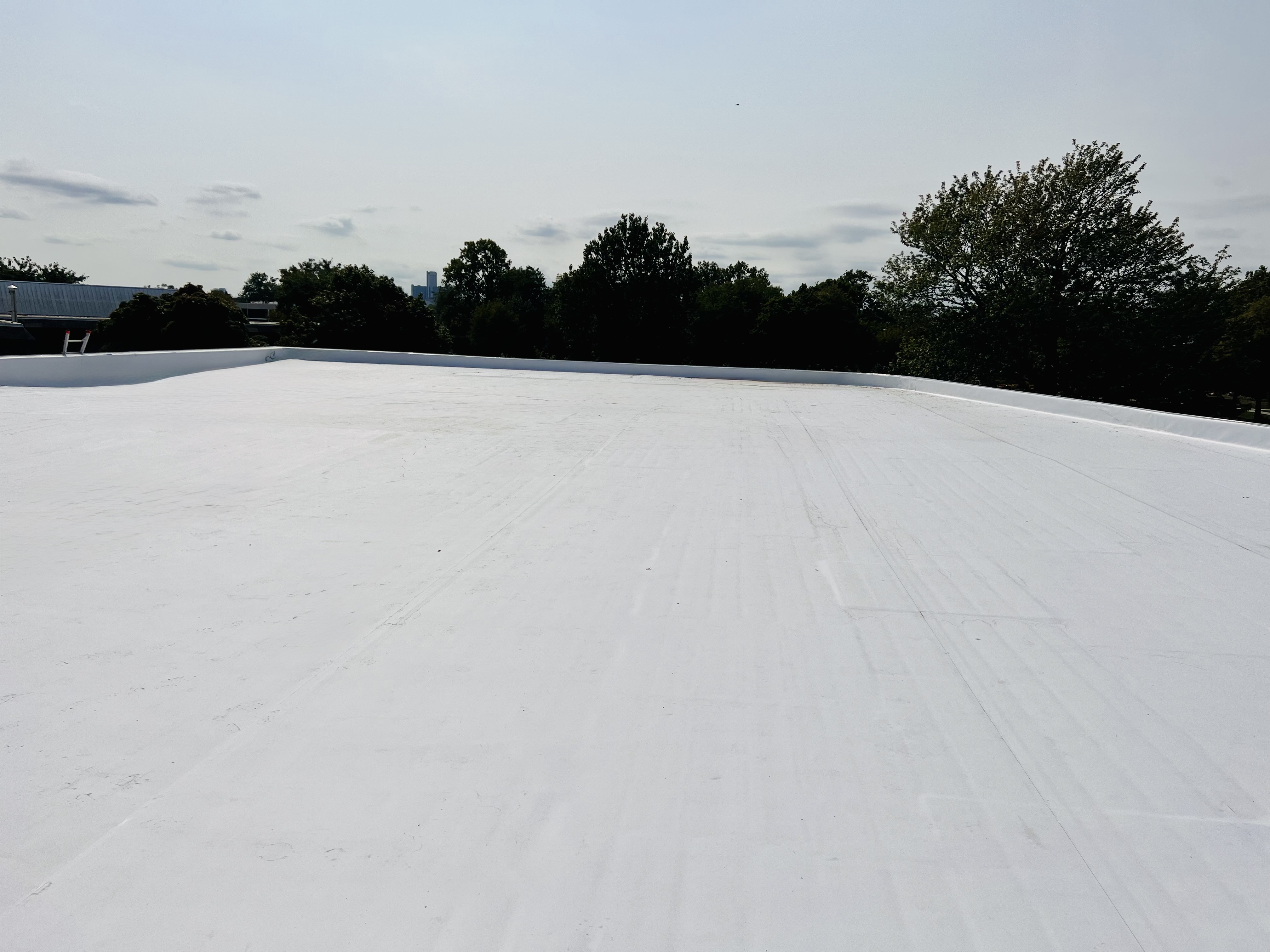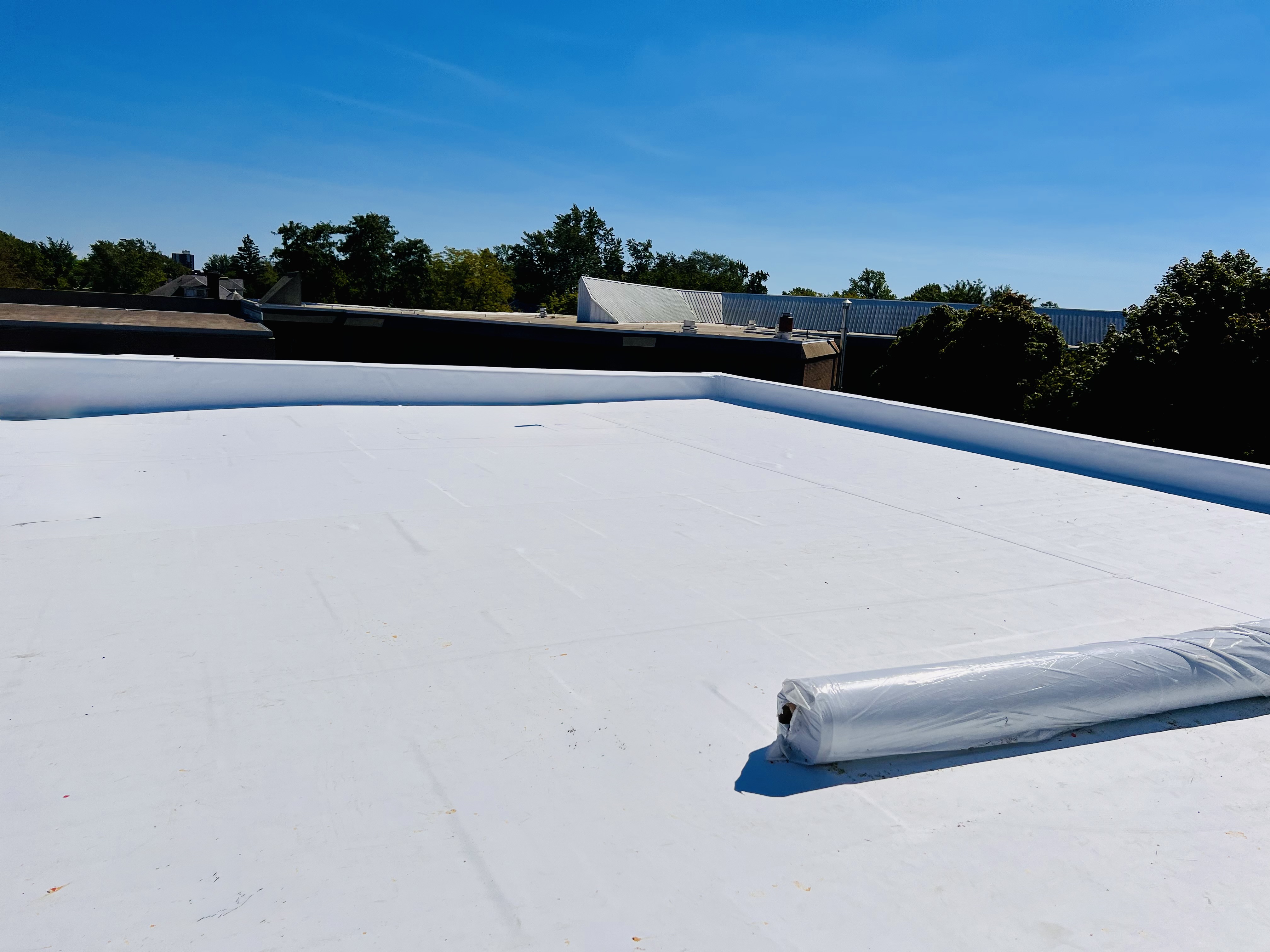

- Material Composition: TPO is a synthetic material made from a blend of polypropylene and ethylene-propylene rubber. It's a relatively newer option in the single-ply category.
- Color: Most commonly white or light-colored, though it can come in other shades.
- Advantages:
- Energy Efficiency: TPO is known for its reflective properties, which help reduce cooling costs by reflecting UV rays and reducing heat absorption. This makes it a good option for warmer climates.
- Cost-Effective: Generally more affordable than EPDM and PVC.
- Heat Weldable: TPO seams are heat-welded, making them stronger and more watertight than some other roofing systems.
- Environmentally Friendly: TPO is often considered a "green" roofing option due to its recyclability and energy efficiency.
- Disadvantages:
- Vulnerability to Punctures: TPO is relatively susceptible to punctures and tears, especially when exposed to sharp objects or foot traffic.
- Longevity Concerns: Some early formulations of TPO had issues with long-term performance, particularly with seam integrity and material degradation. However, newer formulations have addressed many of these concerns.
-
Heat Resistance: TPO can lose its reflective properties over time due to UV degradation.
